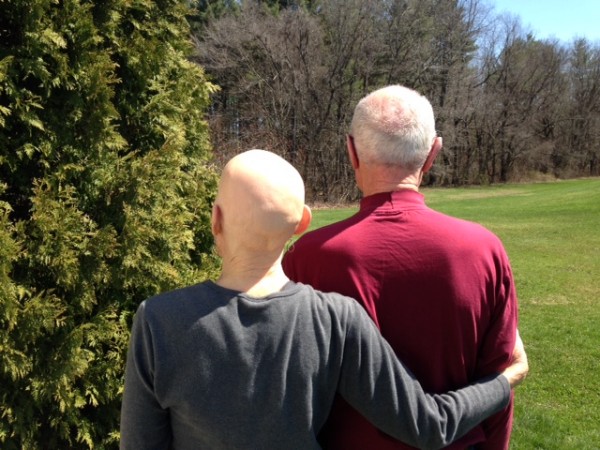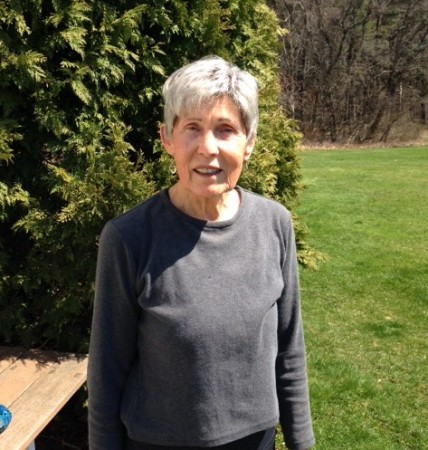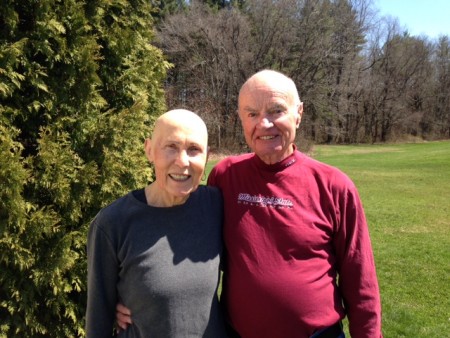Jean Jackson is bald. Totally. Not a single hair on her entire body. It’s happened to her twice. The first time was about nine years ago when she was 64.
“It just started getting thin,” Jean explains. “I went to the doctor and they said it’s stress and your hair does kind of leave and comes back and don’t worry about it. Six weeks later I didn’t have any hair. I went back to the dermatologist and she said ‘Oh, it’s alopecia.’ And that’s that.’
About a year and a half later, Jean’s hair started growing again. “It wasn’t really great hair,” she says, “but it was all mine. It would have been nice if it had grown back thick and full but it was hair. My eyelashes and my eyebrows grew back too which was really nice.”
It lasted four years. In 2013, Jean’s hair fell out again. This time, none of it has grown back. She has alopecia areata, a disease that’s more common than most people realize. It affects two percent of the population in the United States.
What causes alopecia areata?
Alopecia areata is an autoimmune disorder. Some yet-to-be identified factor causes the body to attack the cells in hair follicles that cause hair to grow. It doesn’t destroy the cells, but they shrink and either slow down or stop working.
Alopecia can run in families. If someone under the age of 30 develops it for the first time, it’s likely other members of the family will also have it. It’s less likely if, like Jean, the person is over 30. It also often occurs in families with “asthma, hay fever, atopic eczema, or other autoimmune conditions such as thyroid disease, early-onset diabetes, rheumatoid arthritis, lupus erythematosus, vitiligo, pernicious anemia, or Addison’s disease,” according to the National Alopecia Areata Foundation.
Some people may have a genetic marker — researchers are looking for genes that are specific to alopecia. Scientists at Columbia University Medical Center have been conducting clinical trials with potential drugs.
Treating alopecia
Hopefully, the research will lead to a cure. For now, there are only some possible treatments that may stimulate the cells to start growing hair again. They’re usually more successful in mild cases and have to be continued or they stop working. They include:
- Steroids, which can be given as an injection, taken in pill form or rubbed into the skin.
- Topical immunotherapy, which produces an allergic reaction and may boost hair regrowth.
- Rogaine (minoxidil), which is commonly used for what’s known as pattern baldness.
For Jean, who has the least common and most severe form of alopecia, there has been no good treatment. And coming to terms with her hair loss has been challenging. “The first time around,” she says, “one of the first things that really bothered me was that I looked like a lightbulb. Really. You’d be surprised how much of a difference eyebrows make. I tried penciling them and I thought this is not working so I had my eyebrows tattooed. I think it’s called permanent makeup. It was the best investment I’ve made in a long time.”
Jean got in touch with me because she’d like people (including medical professionals) to have a better understanding of alopecia. They’re apt to stare at her or quickly look away with pity in their eyes. And they often make assumptions.
She sent me a list (we called it her “rant”) of things people have said to her. First, medical professionals.
“In one office an RN, having been told that I had alopecia areata, took one look at my bald head and asked, ‘What type of chemotherapy are you on?'”
The eye doctor, an ophthalmologist who checked me out because of lost lashes, asked me several times, what had caused my hair loss. While he was able to offer some practical advice on how I should protect my now naked eyes, he also said, ‘In 20 years of practice I have never seen anything like this.’ How reassuring.”
What Jean wishes people wouldn’t say
“What did you do?”
“My hair is falling out, too. See this thin area here?”
“Well, have you been under stress lately?”
“My grandmother or elderly neighbor or great aunt has a lovely wig. She got it through a catalog and it was very inexpensive.”
“Well, at least you won’t have any more bad hair days — ha, ha, ha.”
“My daughter, son, was bald until he was 2 years old.”
What she would like to hear
“You mean insurance/Medicare doesn’t pay for wigs or permanent makeup! Let me write to my congressman, senator, the president.”
Coping with alopecia
So … how does Jean cope? She’s become an educator of sorts and is more forthright about her condition. She’s more apt to explain to people that she doesn’t have cancer, she has alopecia. And she’s learned how helpful it can be to have a sense of humor.
She has a wig, which might help keep her head warm during winter, but is generally a nuisance. “If you have no hair wigs are quite itchy and scratchy and hot. Not comfortable and I’m now 73 and I’m more interested in comfort than I am in looks.”
But truth be told, when her head is uncovered, people tend to act weird and that makes her feel uncomfortable. So, depending on the circumstances, she may wear a scarf or a slouchy hat or she may put on “the hair’ aka her wig. “I have been wearing hair more often because I want to be treated like I’m normal, that’s all.”
As for her family, just as it did for Jean, it probably took some time for them to get used to it. She’s likely to be wearing her hair if they’re out in public together. Otherwise, it’s her scarf or her hat. And her husband? “My husband,” she answers with a laugh. “He’s very supportive. Thank God.”
If you’d like to learn more about alopecia, Jean recommends the National Alopecia Areata Foundation. And if you run into her on the street, let her know that you read her story on the Catching Health blog. It will make her happy to know she’s reaching people.




My daughter has alopecia areata. She is 14 and was excited to see someone talk about it. I would love to send you a picture and/or have you talk to her and report from a teenager’s point of view.
Kimberly, let’s talk. My email is diane@CatchingHealth.com.